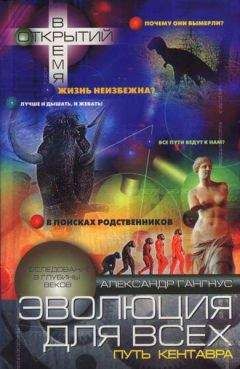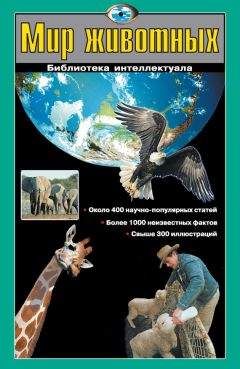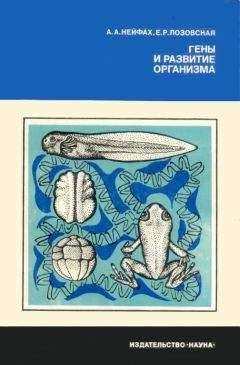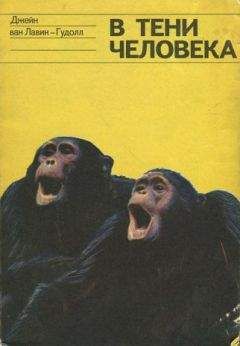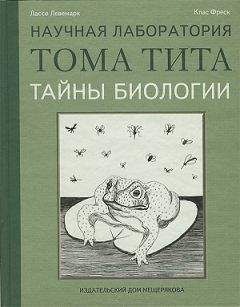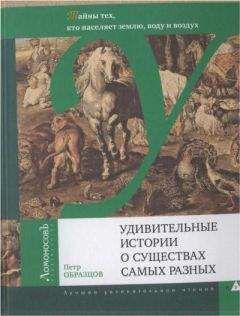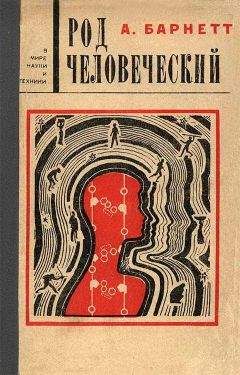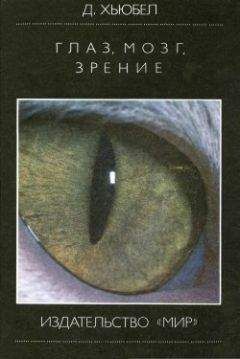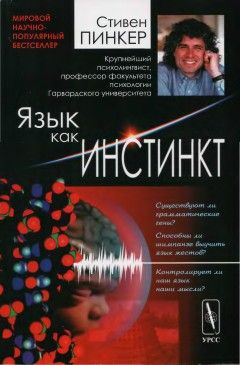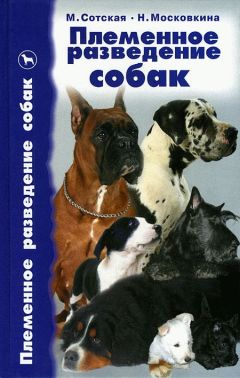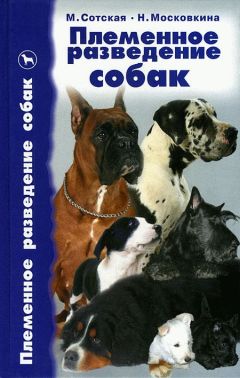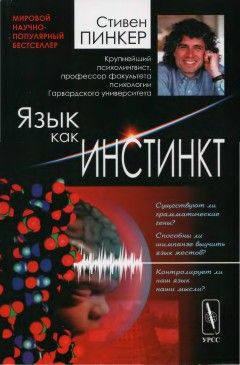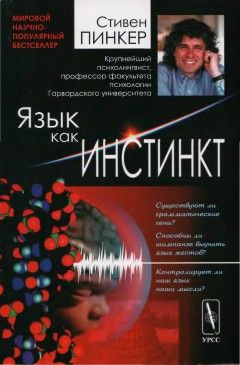Стивен Пинкер - Язык как инстинкт
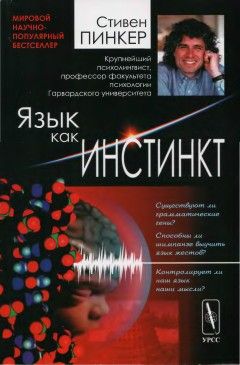
Скачивание начинается... Если скачивание не началось автоматически, пожалуйста нажмите на эту ссылку.
Жалоба
Напишите нам, и мы в срочном порядке примем меры.
Описание книги "Язык как инстинкт"
Описание и краткое содержание "Язык как инстинкт" читать бесплатно онлайн.
Предлагаемая вниманию читателя книга известного американского психолога и лингвиста Стивена Пинкера содержит увлекательный и многогранный рассказ о том феномене, которым является человеческий язык, рассматривая его с самых разных точек зрения: собственно лингвистической, биологической, исторической и т.д. «Существуют ли грамматические гены?», «Способны ли шимпанзе выучить язык жестов?», «Контролирует ли наш язык наши мысли?» — вот лишь некоторые из бесчисленных вопросов о языке, поднятые в данном исследовании.
Книга объясняет тайны удивительных явлений, связанных с языком, таких как «мозговитые» младенцы, грамматические гены, жестовый язык у специально обученных шимпанзе, «идиоты»-гении, разговаривающие неандертальцы, поиски праматери всех языков. Повествование ведется живым, легким языком и содержит множество занимательных примеров из современного разговорного английского, в том числе сленга и языка кино и песен.
Книга будет интересна филологам всех специальностей, психологам, этнографам, историкам, философам, студентам и аспирантам гуманитарных факультетов, а также всем, кто изучает язык и интересуется его проблемами.
Для полного понимания книги желательно знание основ грамматики английского языка. Впрочем, большинство фраз на английском языке снабжены русским переводом.
От автора fb2-документа Sclex’а касательно версии 1.1: 1) Книга хорошо вычитана и сформатирована. 2) К сожалению, одна страница текста отсутствовала в djvu-варианте книги, поэтому ее нет и в этом файле. 3) Для отображения некоторых символов данного текста (в частности, английской транскрипции) требуется юникод-шрифт, например Arial Unicode MS. 4) Картинки в книге имеют ширину до 460 пикселей.
Rozin P. & Schull J. 1988. The adaptive-evolutionary point of view in experimental psychology // R. C. Atkinson, R. J. Herrnstein, G. Lindzey & R. D. Luce (Eds.), Stevens’s handbook of experimental psychology. New York: Wiley.
Ruhlen M. 1987. A guide to the world’s languages, Vol. I. Stanford University Press.
Rumelhart D. E., McClelland J. L. & The PDP Research Group. 1986. Parallel distributed processing: Explorations in the microstructure of cognition, Vol. I: Foundations. Cambridge, Mass.: MIT Press.
Rymer R. 1993. Genie: An abused child’s flight from silence. New York: HarperCollins.
Safire W. 1991. Coming to terms. New York: Henry Holt.
Sagan C. & Druyan A. 1992. Shadows of forgotten ancestors. New York: Random House.
Samarin W. J. 1972. Tongues of men and angels: The religious language of Pentecostalism. New York: Macmillan.
Samuels M. L. 1972. Linguistic evolution. New York: Cambridge University Press.
Sapir E. 1921. Language. New York: Harcourt, Brace, and World. (Рус. пер.: Сепир Э. Язык. Введение в изучение речи // Сепир Э. Избранные труды по языкознанию и культурологии. М.: Прогресс «Универс», 1993.)
Saussure F. de. 1916/1959. Course in general linguistics. New York: McGraw-Hill. (Рус. пер.: Соссюр Ф. де. Курс общей лингвистики // Соссюр Ф. Труды по языкознанию. М.: Прогресс, 1977.)
Savage-Rumbaugh E. S. 1991. Language learning in the bonobo: How and why they learn // Krasnegor et al. 1991.
Schaller S. 1991. A man without words. New York: Summit Books.
Schanck R. C. & Riesbeck, C. K. 1981. Inside computer understanding: Five programs plus miniatures. Hillsdale, N. J.: Erlbaum.
Searle J. (Ed.) 1971. The philosophy of language. New York: Oxford University Press. (Рус. пер.: Философия языка / Ред.-сост. Дж. Р. Сёрл. М.: УРСС, 2004.)
Seidenberg M. S. 1986. Evidence from the great apes concerning the biological bases of language // W. Demopoulos & A. Marras (Eds.), Language learning and concept acquisition: Foundational issues. Norwood, N. J.: Ablex.
Seidenberg M. S. & Petitto L. A. 1979. Signing behavior in apes: A critical review. Cognition, 7. P. 177–215.
Seidenberg M. S. & Petitto L. A. 1987. Communication, symbolic communication, and language: Comment on Savage-Rumbaugh, McDonald, Sevcik, Hopkins, and Rupert 1986 // Journal of Experimental Psychology: General, 116. P. 279–287.
Seidenberg M. S., Tanenhaus M. K., Leiman M. & Bienkowski M. 1982. Automatic access of the meanings of words in context: Some limitations of knowledge-based processing // Cognitive Psychology, 14. P. 489–537.
Selkirk E. O. 1982. The syntax of words. Cambridge, Mass.: MIT Press.
Shatz C. J. 1992. The developing brain. Scientific American, September.
Shepard R. N. 1978. The mental image // American Psychologist, 33. P. 125–137.
Shepard R. N. 1987. Evolution of a mesh between principles of the mind and regularities of the world // J. Dupre (Ed.), The latest on the best: Essays on evolution and optimality. Cambridge, Mass.: MIT Press.
Shepard R. N., and Cooper L. A. 1982. Mental images and their transformations. Cambridge, Mass.: MIT Press.
Shevoroshkin V. 1990. The mother tongue: How linguists have reconstructed the ancestor of all living languages // Sciences, 30. P. 20–27.
Shevoroshkin V. & Markey T. L. 1986. Typology, relationship, and time. Ann Arbor, Mich.: Karoma.
Shieber S. 1994. Lessons from a restricted Turing Test. Communications of the Association for Computing Machinery.
Shopen T. (Ed.) 1985. Language typology and syntactic description, 3 vols. New York: Cambridge University Press.
Simon J. 1980. Paradigms lost. New York: Clarkson Potter.
Singer P. 1992. Bandit and friends // New York Review of Books, April 9.
Singleton J. & Newport E. 1993. When learners surpass their models: the acquisition of sign language from impoverished input. Unpublished manuscript, Department of Psychology, University of Rochester.
Siple P. (Ed.) 1978. Understanding language through sign language research. New York: Academic Press.
Slobin D. I. 1977. Language change in childhood and in history // Macnamara (Ed.), Language learning and thought. New York: Academic Press.
Slobin D. I. (Ed.) 1985. The crosslinguistic study of language acquisition, Vols. 1 & 2. Hillsdale, N. J.: Erlbaum.
Slobin D. I. (Ed.) 1992. The crosslinguistic study of language acquisition, Vol. 3. Hillsdale, N. J.: Erlbaum.
Smith G. W. 1991. Computers and human language. New York: Oxford University Press.
Sokal R. R., Oden N. L. & Wilson C. 1991. Genetic evidence for the spread of agriculture in Europe by demic diffusion // Nature, 351. P. 143–144.
Solan L. M. 1993. The language of judges. Chicago: University of Chicago Press.
Spelke E. S., Breinlinger K., Macomber J. & Jacobson K. 1992. Origins of knowledge // Psychological Review, 99. P. 605–632.
Sperber D. 1982. On anthropological knowledge. New York: Cambridge University Press. Sperber, D. 1985. Anthropology and psychology: Toward an epidemiology of representations // Man, 20. P. 73–89.
Sperber D. 1994. The modularity of thought and the epidemiology of representations // Hirschfeld & Gelman (Eds.), Mapring the mind: Domain specificity in cognition and culture. New York: Camblidge University Press.
Sperber D. & Wilson D. 1986. Relevance: Communication and cognition. Cambridge, Mass.: MIT Press.
Sproat R. 1992. Morphology and computation. Cambridge, Mass.: MIT Press.
Staten V. 1992. Ol’ Diz. New York: HarperCollins.
Steele S. (with Akmajian A., Demers R., Jelinek E., Kitagawa C., Oehrle R., and Wasow T.) 1981. An Encyclopedia of AUX: A Study of Cross-Linguistic Equivalence. Cambridge, Mass.: MIT Press.
Stringer C. B. 1990. The emergence of modern humans // Scientific American, December.
Stringer C. B. & Andrews P. 1988. Genetic and fossil evidence for the origin of modern humans // Science, 239. P. 1263–1268.
Stromswold K. J. 1990. Learnability and the acquisition of auxiliaries. Doctoral dissertation, Department of Brain and Cognitive Sciences, MIT.
Stromswold K. J. 1994. Language comprehension without language production. Presented at the Boston University Conference on Language Development.
Stromswold K. J. 1994. The cognitive and neural bases of language acquisition // M. S. Gazzaniga (Ed.), The cognitive neurosciences. Cambridge, Mass.: MIT Press.
Stromswold K. J., Caplan D. & Alpert N. 1993. Functional imaging of sentence comprehension. Unpublished manuscript, Department of Psychology, Rutgers University.
Studdert-Kennedy M. 1990. This view of language // Pinker & Bloom. 1990.
Supalla S. 1986. Manually coded English: The modality question in signed language development. Master’s thesis, University of Illinois.
Swinney D. 1979. Lexical access during sentence comprehension: (Re)consideration of context effects // Journal of Verbal Learning and Verbal Behavior, 5. P. 219–227.
Symons D. 1979. The evolution of human sexuality. New York: Oxford University Press.
Symons D. & commentators. 1980. Précis and multiple book review of «The Evolution of Human Sexuality» // Behavioral and Brain Sciences, 3, 171–214.
Symons D. 1992. On the use and misuse of Darwinism in the study of human behavior // Barkow, Cosmides & Tooby, 1992.
Tartter V. C. 1986. Language processes. New York: Holt, Rinehart & Winston.
Terrace H. S. 1979. Nim. New York: Knopf.
Terrace H. S. Petitto L. A., Sanders R. J. & Bever T. G. 1979. Can an ape create a sentence? // Science, 206. P. 891–902.
Thomas L. 1990. Et cetera, el cetera: Notes of a wordwatcher. Boston: Little, Brown.
Thomason S. G. 1984. Do you remember your previous life’s language in your present incarnation? // American Speech, 59. P. 340–350.
Tiersma P. 1993. Linguistic issues in the law // Language, 69. P. 113–137.
Tooby J. & Cosmides L. 1989. Adaptation versus phylogeny: The role of animal psychology in the study of human behavior // International Journal of Comparative Psychology, 2. P. 105–118.
Tooby J. & Cosmides L. 1990a. On the universality of human nature and the uniqueness of the individual: The role of genetics and adaptation // Journal of Personality, 58. P. 17–67.
Tooby J. & Cosmides L. 1990b. The past explains the present: Emotional adaptations and the structure of ancestral environments // Ethology and sociobiology, 11. P. 375–424.
Tooby J. & Cosmides L. 1992. Psychological foundations of culture // Barkow, Cosmides, & Tooby. 1992.
Trueswell J. C., Tanenhaus M. & Garnsey S. M. 1994. Semantic influences on parsing: Use of thematic role information in syntactic ambiguity resolution // Journal of Memory and Language, 33. P. 285–318.
Trueswell J. C., Tanenhaus M. & Kello C. 1993. Verb-specific constraints in sentence processing: Separating effects of lexical preference from garden-paths // Journal of Experimental Psychology: Learning, Memory, and Cognition, 19(3). P. 528–553.
Turing A. M. 1950. Computing machinery and intelligence // Mind, 59. P. 433–460.
Voegelin C. F. & Voegelin F. M. 1977. Classification and index of the world’s languages. New York: Elsevier.
Von der Malsburg C. & Singer W. 1988. Principles of cortical network organization // P. Rakic & W. Singer (Eds.), Neurobiology of neocortex. New York: Wiley.
Wald B. 1990. Swahili and the Bantu languages // B. Comrie (Ed.), The world’s major languages. New York: Oxford University Press.
Wallace R. A. 1980. How they do it. New York: Morrow.
Wallesch C.-W., Henriksen L., Kornhuber H.-H. & Paulson O. B. 1985. Observations on regional cerebral blood flow in cortical and subcortical structures during language production in normal man // Brain and Language, 25, 224–233.
Wallich P. 1991. Silicon babies // Scientific American, December. P. 124–134.
Wallman J. 1992. Aping language. New York: Cambridge University Press.
Wang W. S-Y. 1976. Language change // Harnad, Steklis, & Lancaster. 1976.
Wanner E. 1988. The parser’s architecture // F. Kessel (Ed.), The development of language and of language researchers: Papers presented to Roger Brown. Hillsdale, N. J.: Erlbaum.
Wanner E. & Maratsos M. 1978. An ATN approach to comprehension // M. Halle, J. Bresnan & G. A. Miller (Eds.), Linguistic theory and psychological reality. Cambridge, Mass.: MIT Press.
Warren R. M. 1970. Perceptual restoration of missing speech sounds // Science, 167. P. 392–393.
Warrington E. K. & McCarthy R. 1987. Categories of knowledge: Further fractionation and an attempted integration // Brain, 106. P. 1273–1296.
Watson J. B. 1925. Behaviorism. New York: Norton.
Weizenbaum J. 1976. Computer power and human reason. San Francisco: Freeman.
Werker J. 1991. The ontogeny of speech perception // Mattingly & Studdert-Kennedy. 1991.
Wexler K., and Culicover P. 1980. Formal principles of language acquisition. Cambridge, Mass.: MIT Press.
Wilbur R. 1979. American Sign Language and sign systems. Baltimore: University Park Press.
Williams E. 1981. On the notions «lexically related» and «head of a word» // Linguistic Inquiry, 12. P. 245–274.
Williams G. C. 1957. Pleiotropy, natural selection, and the evolution of senescence // Evolution, 11. P. 398–411.
Williams G. C. 1966. Adaptation and natural selection: A critique of some current evolutionary thought. Princeton, N. J.: Princeton University Press.
Williams G. C. 1992. Natural selection. New York: Oxford University Press.
Williams H. 1989. Sacred elephant. New York: Harmony Books.
Williams J. M. 1990. Style: Toward clarity and grace. Chicago: University of Chicago Press.
Wilson E. O. 1972. Animal communication // Scientific American, September.
Wilson M. & Daly M. 1992. The man who mistook his wife for a chattel // Barkow, Cosmides, & Tooby. 1992.
Winston P. H. 1992. Artificial Intelligence (4th ed.). Reading, Mass.: Addison-Wesley.
Woodward J. 1978. Historical bases of American Sign Language // Siple 1978.
Wright R. 1991. Quest for the mother tongue // Atlantic Monthly, April. P. 39–68.
Wynn K. 1992. Addition and subtraction in human infants // Nature, 358. P. 749–750.
Yngve V. H. 1960. A model and an hypothesis for language structure // Proceedings of the American Philosophical Society, 104. P. 444–466. (См. рец. на эту работу: Ревзин И. И. Интересная гипотеза Ингве // Машинный перевод и прикладная лингвистика. М., 1961. Вып. 5. С. 79–80.)
Подписывайтесь на наши страницы в социальных сетях.
Будьте в курсе последних книжных новинок, комментируйте, обсуждайте. Мы ждём Вас!
Похожие книги на "Язык как инстинкт"
Книги похожие на "Язык как инстинкт" читать онлайн или скачать бесплатно полные версии.
Мы рекомендуем Вам зарегистрироваться либо войти на сайт под своим именем.
Отзывы о "Стивен Пинкер - Язык как инстинкт"
Отзывы читателей о книге "Язык как инстинкт", комментарии и мнения людей о произведении.







